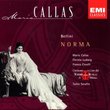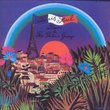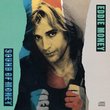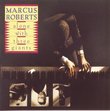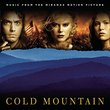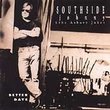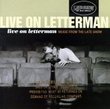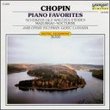| All Artists: Ferruccio Busoni, Johann Sebastian Bach, Robert Schumann, Alexander Scriabin, Frederic Chopin, Claude Debussy, Moritz Moszkowski, Vladimir Horowitz Title: Horowitz Live and Unedited [includes Bonus DVD] Members Wishing: 0 Total Copies: 0 Label: Sony Original Release Date: 1/1/1965 Re-Release Date: 9/30/2003 Album Type: Enhanced, Live Genres: Dance & Electronic, Classical Styles: Ballets & Dances, Mazurkas, Chamber Music, Forms & Genres, Ballads, Etudes, Fantasies, Sonatas, Suites, Toccatas, Historical Periods, Baroque (c.1600-1750), Classical (c.1770-1830), Modern, 20th, & 21st Century, Instruments, Keyboard Number of Discs: 3 SwapaCD Credits: 3 UPC: 827969302323 |
Search - Ferruccio Busoni, Johann Sebastian Bach, Robert Schumann :: Horowitz Live and Unedited [includes Bonus DVD]
![Horowitz Live and Unedited [includes Bonus DVD]](https://nationalbookswap.com/cd//l/60/1660/6111660.jpg) | Ferruccio Busoni, Johann Sebastian Bach, Robert Schumann Horowitz Live and Unedited [includes Bonus DVD] Genres: Dance & Electronic, Classical
|
Larger Image |
CD DetailsSimilar CDs
Similarly Requested CDs
|
CD ReviewsWelcome Back, Volodya Hank Drake | Cleveland, OH United States | 10/02/2003 (5 out of 5 stars) "After years of controversy, Sony has released Vladimir Horowitz's 1965 comeback recital for the first time in unedited form. The return of Horowitz to public performance after an absence of twelve years was the Classical music event of the 1960s. The pianist had been rehearsing in Carnegie Hall for months before he announced a recital, scheduled for May 9, 1965. He had reacquainted himself with the Hall's acoustics, but could not prevent his shaky nerves from asserting themselves on the day of the concert. Horowitz arrived at Carnegie Hall very late, and his tardiness made the audience as nervous as he was. To make matters worse, Columbia Records ordered the Hall's noisy air-conditioning turned off, which quickly turned the packed auditorium into a sauna. Thus, the odds were against Horowitz when he stepped on stage to a tumultuous welcome. To deny the fact that his nerves got the better of him during the opening trial-by-fire Bach-Busoni Toccata is to deny reality. Mixed in with the grandeur of Horowitz's conception, and the dazzle of some passages, are numerous slips of finger. This recording serves to illustrate the fact that the merits of live and studio recordings are weighed in different scales. (There exists in RCA's vaults a 1950 studio recording from Horowitz which outdoes the 1965 version both musically and technically, but it has never been released.)Schumann's Fantasy is given a rich, vibrant, and ardent performance, which recalls the composer's passionate love for Clara Wieck. The first movement features an array of tonal color which Horowitz could never achieve in the recording studio; in the March Horowitz brings to the fore Schumann's almost obsessive dotted rhythms. The most controversial edit of the original LP was during the coda of this march, a treacherous spot for any pianist. The unedited version proves that Horowitz's lapse was not the catastrophe some have claimed, but merely a few brief baubles. The final movement has some of the most moving playing, by turns reflective and exultant, Horowitz ever achieved. In Scriabin's Sonata No. 9, and Poeme, Horowitz is in his element. Beyond the demonic/erotic temperament required for these works, Horowitz's Scriabin is also notable for its pianistic clarity, architectural solidity, and faithfulness to the score (one can almost take dictation from Horowitz's playing).Horowitz recorded more Chopin than any other composer. By 1965, Horowitz was long regarded as one of the great Mazurka players, and the Mazurka here (C-sharp Minor) illustrates why. The pianist was able to balance the dance/poetic elements, preventing the Mazurka from sounding either straightjacketed or chaotic. The same can be said of the Etude in F, two minutes of musical ecstasy. Horowitz ended his 1965 program with the Ballade in G-minor, giving a performance which was by turns poetic, soaring, and epic. The four encores from the 1965 concert demonstrate Horowitz's increased subtlety in the brooding Scriabin Etude, simplicity in the Debussy Serenade and Schumann's Träumerai, and the "old Horowitz" in the rippling Moszkowski Etude. There is something about the release of this album in unedited form which reveals the recital to be a greater whole than the sum of its parts. Sony should consider further untouched releases from its live catalogue. Despite some overly close microphone placement, this recording captures the unique sound of Horowitz performing in Carnegie Hall (until its acoustics were spoiled in 1986, Horowitz's favorite American concert hall). The remastering has opened up the dynamics, and the piano sound is fuller than in previous issues." As much a historical artifact as an album. Michael W. Taylor | Roswell, Georgia, United States | 10/02/2003 (5 out of 5 stars) "This realization is a necessity for anyone who is, and isn't, familiar with this legendary concert.It can be argued that Vladimir Horowitz presented two of the most important recitals of the 20th century, 1986 in Moscow, and this one, his Carnegie Hall comeback concert. May 9, 1965.What makes this release so important is the fact that this is the first time that this performance is presented fully restored and unedited. That is what makes this album as much a historical artical as album since there have been numerous accounts written about this concert.It is shocking to hear this concert as it becomes quite apparent that Horowitz' performance of the Bach-Busoni Toccata in C and the Schumann Fantasy were both heavily edited. In the original release of the cocnert, the opening runs in the Toccata are much slower and more crisp. In addition, at the end of the 2nd movement of the Schumann, Horowitz makes some glaring mistakes and almost loses all control. Almost all accounts of this concert talk about the atmospere and mood surrounding this performance. Electricity was in the air, as well as volumes of nervous energy. No one knew what was going to happen in this concert as it was well known that Horowitz was extremely nervous. The general feeling documented was that Horowitz survived the first half of the program (Bach-Busoni and Schumann) and in doing so, was born again. A discerning lister will be able to sense this mood and can tell how nervous Horowitz is in his playing (especially during the first movement of the Bach-Busoni). In my opinion, you can hear his confidence grow as the concert progresses, which makes the finale, the Chopin Ballade in G Minor, all the more exciting!There is no real way to place a rating on this album in terms of stars. It just could be the most important classical release in the past 20 years." Just the Facts... Hank Drake | Cleveland, OH United States | 11/29/2003 (5 out of 5 stars) "This is not a review per se. My review is elsewhere on this page. But I wanted to follow-up and correct a few errors, which have been circulated in regard to this recording.First, the corrections used on the original version of Horowitz at Carnegie Hall were not made at a "patch session at Carnegie a few days" after the concert. Columbia's engineers had already recorded Horowitz's rehearsals and used that material for the editing.Second, the editing in the album was neither as extensive as some have suggested, nor as insignificant as the anonymous reviewer from Baltimore states. Here is a (mostly) complete list of the patches on the original album, which have been removed from this new edition:Bach-Busoni: Preludio: Measures 2-12 and parts of the coda (Horowitz, by the way, does not play the ossias at bars 8, 10, and 12); Intermezzo: Small patches at bars 7 and 11; Fugue: Several edits between bars 97 and 110, and again in the coda.Schumann Fantasy: 1st Movement: patches at 7:32 and 10:21; 2nd Movement: small patches at 2:44 and 4:32, and a series of patches in the coda 6:58-7:39; 3rd Movement: No edits.Scriabin: Sonata No 9: No Edits. Poem in F-sharp: Patch from 2:16-2:26Chopin: Mazurka: Small edit at 2:02; Etude: Patched sections from 1:27-1:33 and 2:15-2:20; Ballade: Small edits at 2:04 and 4:52, at least four patches in the coda.None of the encores were edited. Patched or not, the 1965 return concert contains some stunning piano playing. Can anyone imagine the pressure Horowitz was under on that day? To prove you have not just retained your original greatness, but have deepened and become even greater cannot have been easy. The new, unedited version of the concert is not a revelation, but serves as a reminder of Horowitz's all too human frailty."
|

 Track Listings (8) - Disc #1
Track Listings (8) - Disc #1